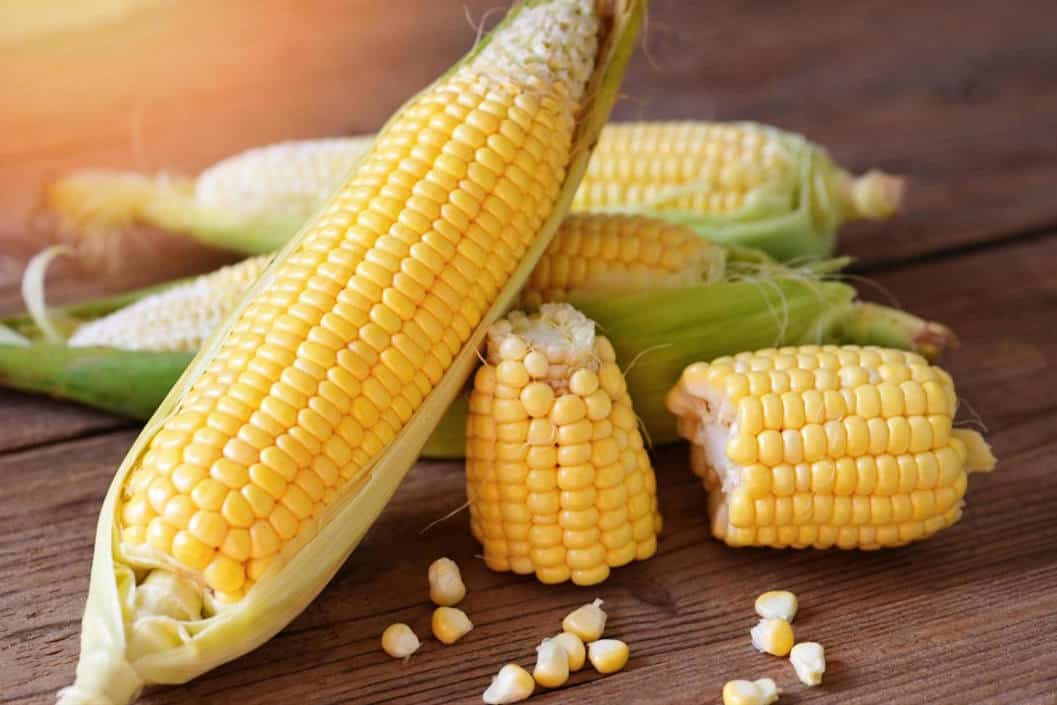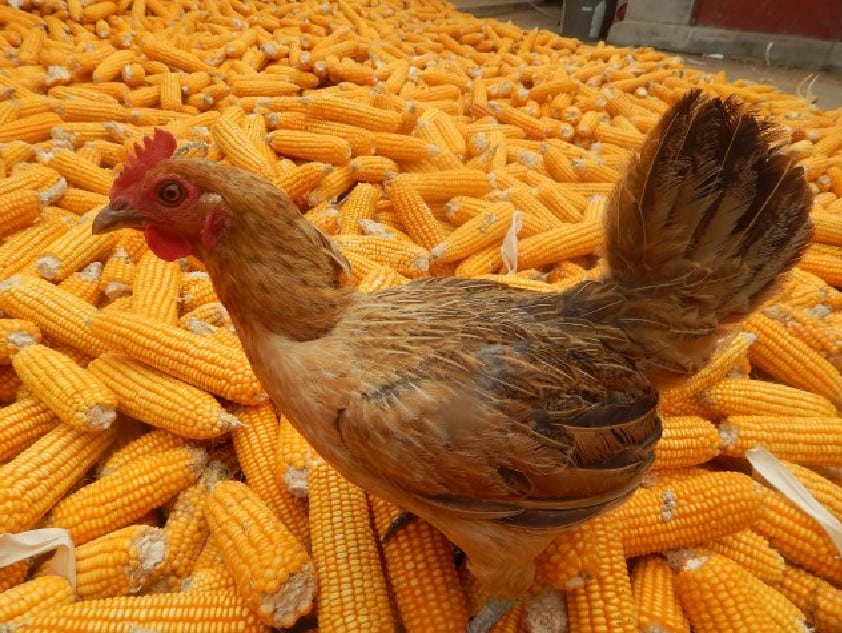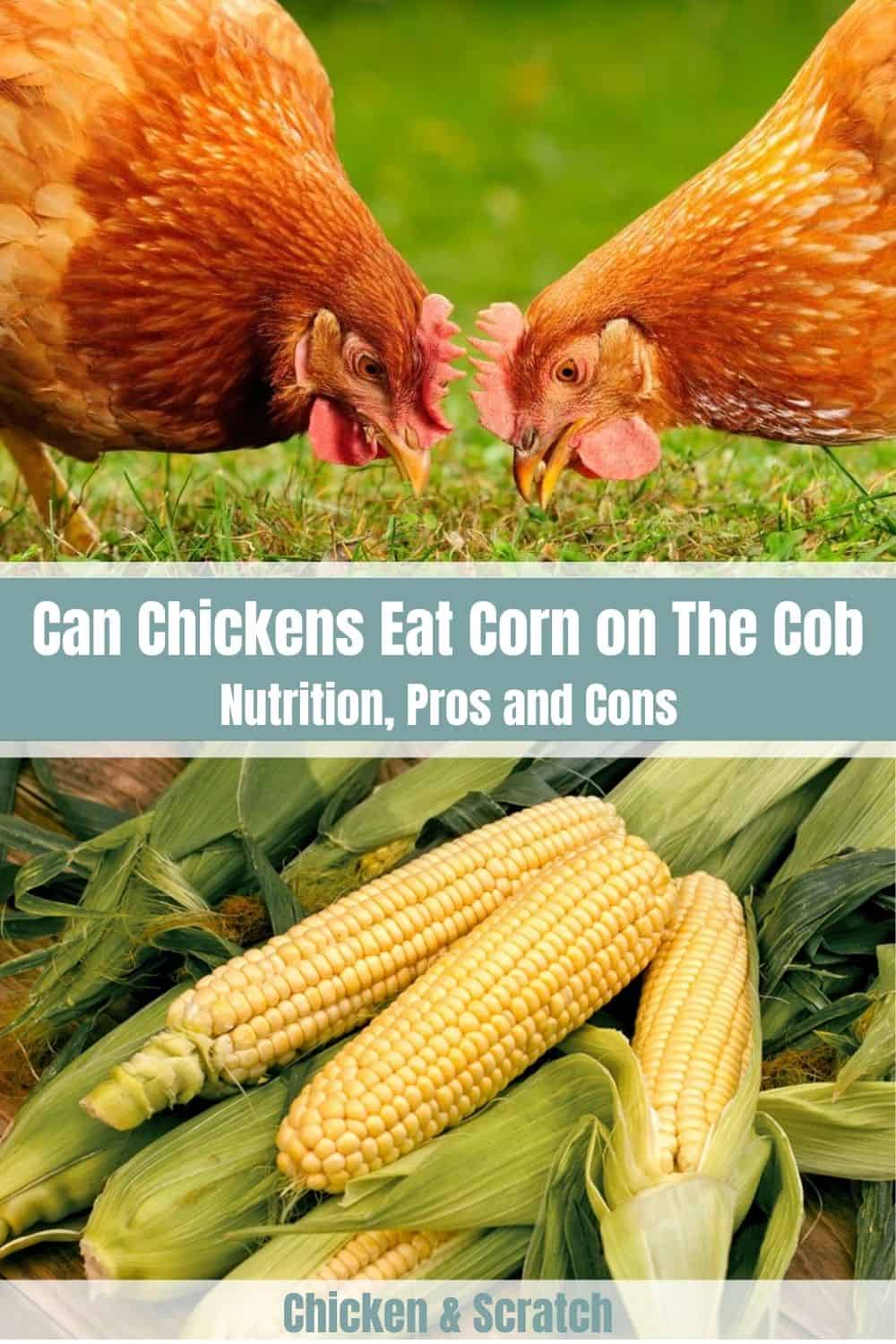Corn has been one of the main foods humans give to their chickens as the availability is high, prices are low, and they can keep the flock full. Now owners would want to try many ways to prepare this snack and may have the question, “Can chickens eat on the cob?” in their minds.
This article will cover
- All About Corns
- Corn On The Cobs and Chickens
- Advantages and Disadvantages of Feeding Chickens Corn on The Cob
- Preserving Corns For Your Chickens
- Other Ways of Feeding Corn to Chickens
- Necessary Nutrients for Chickens
All About Corn

| Nutrients | Amount |
| Calories | 177 |
| Carbohydrates | 41g |
| Protein | 5g |
| Fiber | 5g |
| Fat | 2g |
Corn has been a popular crop as it competes with rice in the league of staples in so many places. And so, corn has been used and present on the table as well as for the animals’ meals! It has become one of the most widely distributed food crops worldwide. As simple as they are, corns are more interesting than they let on.
Corn is high in fiber and is easily digedted by chickens. While corn can look all the same and familiar to people, they have different types available too. Corns are high in calories, so they are helpful for chickens during the colder days as chickens eat foods high in calories to help them get warm.
Thus, corn is also categorized as “hot” food. This may assume that eating corn in warmer weather will cause them to get heated inside and feel extra hot. No, this is not true. It’s still okay to feed them corn during the summers.
What’s not okay, though, is when owners overfeed their chickens with corn. As mentioned earlier, corn is a high-calorie food. Thus, having too much will cause some issues in your chickens, which are fatal.
While corn is the easiest snack for chickens to munch on and something they enjoy, corn does not offer them anything crucial. This means that corn does not give them anything necessary to grow healthy.
For this reason, owners usually just feed corn to them occasionally or mix something else with the corn. This way, they can feed their flocks full and get some of the necessary nutrients in them as well.
Corn seems great, especially the part where they are great snacks for flocks. However, there are limitations even for corn. When feeding the flock with corn, it’s recommended to do it occasionally instead of every day. It’s advantageous to ensure the chickens take up what they need instead of taking more technically empty stuff.
Corn On The Cobs and Chickens

So, can chickens eat corn on the cob? The answer is yes, and they can. Both the kernel and the cob are safe to eat for your chickens. Given this information, it can be concluded that they can eat corn on the cobs. However, there are many ways to prepare corn for your chickens, including cooking, cracking, or serving it fresh or frozen.
While raw corn is okay to feed your flock, it would still be better to cook it before serving it. Cooked corn is softer and easier to peck on. The cobs are also extra soft, and the whole batch exudes a pleasant smell that can help excite your chicken’s moods.
Chickens will still peck on raw corn as they are not that much of a picky eater. However, choosing the fresh ones rather than the dried-out ones would be beneficial when serving raw corn. Dry corn will be harder for them to peck and eat.
Most owners find it easier to give their chickens the whole ear of corn, instead of going through the effort of removing all the kernels. You can throw one on the ground and let your chickens have their way into the corn on the cob.
It is also a popular method to tie up the corn and let them have a bit of a game and exercise as they peck on the hanging corn. However, some prefer separating the cob from the kernels to help their chickens eat easier and have a more straightforward digestive process.
Advantages and Disadvantages of Feeding Chickens Corn on The Cob
| ADVANTAGE | DISADVANTAGE |
| ● Convenient
● Helps with Physical Exercise ● Easier to Gather and Clean Leftovers |
● Harder to Eat
● Higher Calories |
First and foremost, owners choose this method for their convenience. Not only is it easy to execute, but it also does not require much effort. It is easy just to peel it and serve them to your chickens.
Another thing is the way it provides a lot of time for play. Chickens play around with their big piece of corn around the area. In other words, the corn on the cob also helps their physical health, serving as exercise time for the flock.
Another good thing about feeding your flock corn on the cob is the convenience when you clean up. Leftover corn cobs are easier to gather and clean. Afterward, you can keep the leftover cobs and turn them into chicken snacks or throw them in the right place.
However, considering the calorie content of the corn, it’s best to control corn consumption among your flock to ensure a balanced diet. Chickens are not an animal that stops eating once they become full. In fact, they will as long as they can keep on pecking.
Preserving Corns For Your Chickens

There are instances when the corn supply exceeds what your chickens finish for a week. If so, owners may wonder where to pile the leftover corn, or is it okay to just pile them up? Instead of piling them up somewhere in your backyard, an excellent way to preserve your leftover corn is to freeze them.
Preserving corn through freezing:
- The first thing to do is to get a pot and boil water.
- Now when the water is brought to a boil, blanch the leftover corn.
- The next step is to cool the leftover corn up. Get them ready for an ice bath. You can have water in a bowl with ice in it and place them in.
- After getting them out of the bath, dry the leftover corn. You can do this by gently patting it with a clean cloth. Make sure to dry each one of them.
- Get the freezer bags ready.
- The next step is to pack the leftover corn in the bag.
- Last but not least, freeze them!
Note that if the corn is leftover from dinner, there is no need to blanch and give the corn an iced bath. You can skip and move on to patting them dry, getting the freezer bags ready, and so on.
To serve them to your chickens, you can reheat the corn, or better yet, take your time and take them out hours before serving so the ice will melt naturally inside at room temperature.
Other Ways of Feeding Corn to Chickens

If you’re looking for alternative ways to feed corn to chickens other than on the cob, consider these options:
- Cracked or crushed corn
- Cornmeal
- Scratch grains that contain whole or cracked grains
- Fermented corn (soaked until soft and slightly acidic)
- Loose kernels
Each of these methods provides a different type of experience—whether processed grain in feeders troughs or enriching homemade recipes scattered across their coop’s ground. Further, fermenting potential improves digestion while boosting gut health with increased nutrient availability from an enhanced absorption process!
Necessary Nutrients for Chickens
Chicken feed usually contains cereal grains, soybean meal, fats, vitamins, and premixed minerals. Owners often mix these up with water to complete the feed for their flocks.
- Water has been an essential part of all the creatures living on Earth. As the saying goes, “Water is life.” This is true because all living things will perish without water. So, why is water so important anyway? Water is essential in chickens because of so many reasons. The first is for metabolism. Water is widely involved in the body processes occurring inside a chicken’s body. Water plays an essential role in digestion, regulating temperature, and eliminating unnecessary elements from the body. Another thing to note is how chickens are easily thirsty. These creatures are easily dehydrated. Thus, they need to keep an eye on their water bowls and get ready for a refill.
- As people have been well acquainted with, carbohydrate is essential as it supplies them with energy. They can get their supply of carbohydrates from corn, wheat, and other cereal. However, these are not designed especially for them, and chickens may have difficulty digesting and eating them, so owners and experts often still add appropriate enzyme preparations for their chickens.
- Proteins and Amino Acids. These elements are crucial for the chicken’s building of important features like feathers, skin, bones, and other physical protection the chicken anatomy has in need. Amino acids are also in charge of forming soft tissues. These tissues include important parts such as muscles and the chicken’s organs. Lack of protein will result in severe problems for your flock, including stagnation or loss of growth and the ability to lay eggs.
- They help in making the feed more efficient for your chickens. Fats add up to the energy concentration inside the chicken’s body.
- Vitamins and Minerals. These elements are also essential in the growth of chicken. Many different minerals are responsible and help keep the bone healthy and allow the chicken to grow stronger as they grow older.
Summary
Humans love eating corn on the cob, so can chickens eat corn on the cob? The answer is yes! They love eating the kernel from the cob as well. Corn on the cob gets chickens energetic as they exert effort in pecking corn out of the cob. Now, there is a new way for owners to prepare corn snacks for their chickens.

Joseph Hudson has been raising chickens for over 15 years. In 2018, he completed the Agriculture & Natural Resources program at Mt. San Antonio College. He currently raises over 1400 chickens on his 7.5-hectare farm. He keeps sharing his experience on raising healthy and happy chickens on Chicken Scratch The Foundry.







